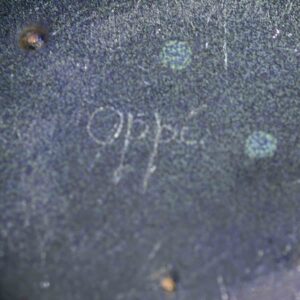Oppi Untracht - A multicoloured enameled copper plate - 1960's or 1970's
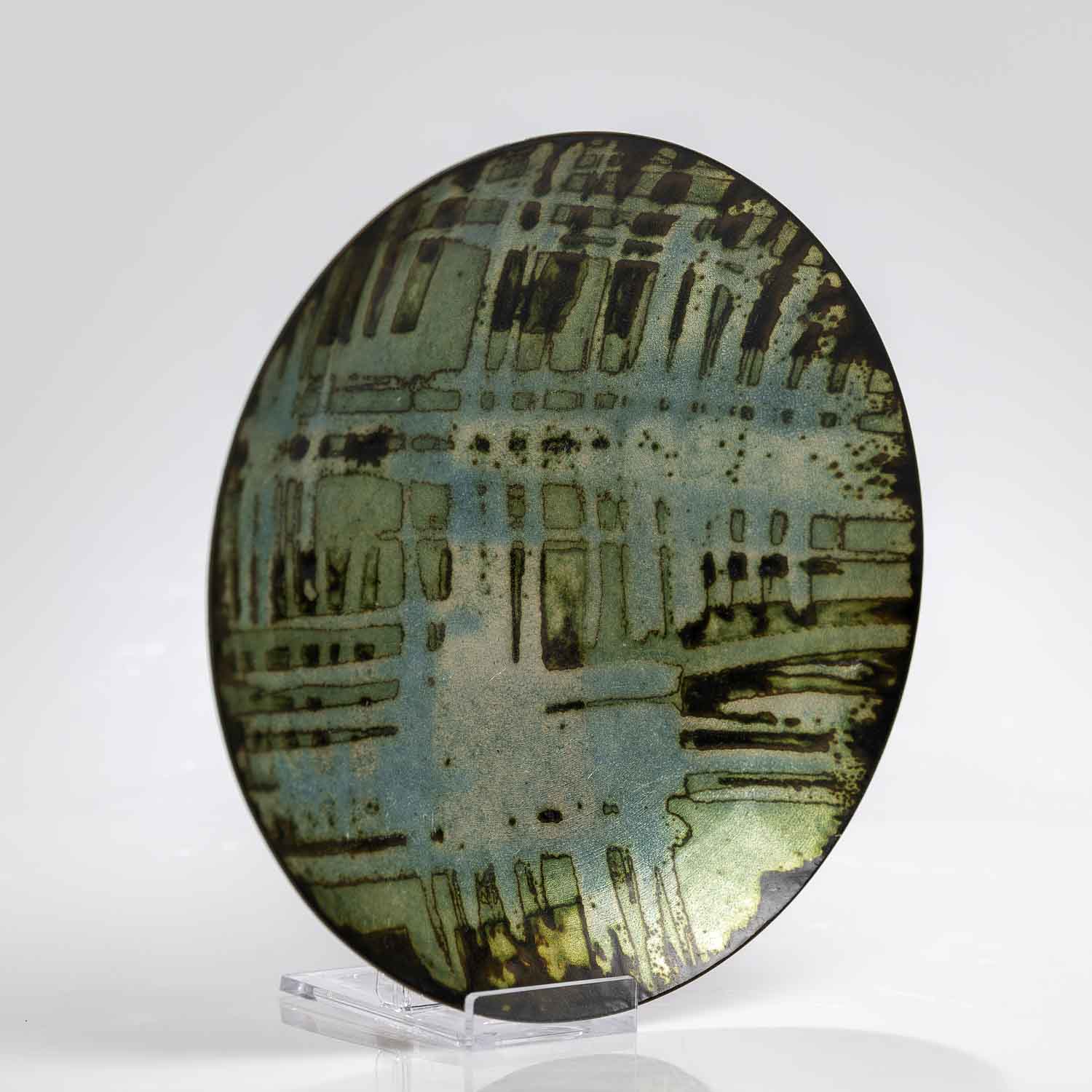
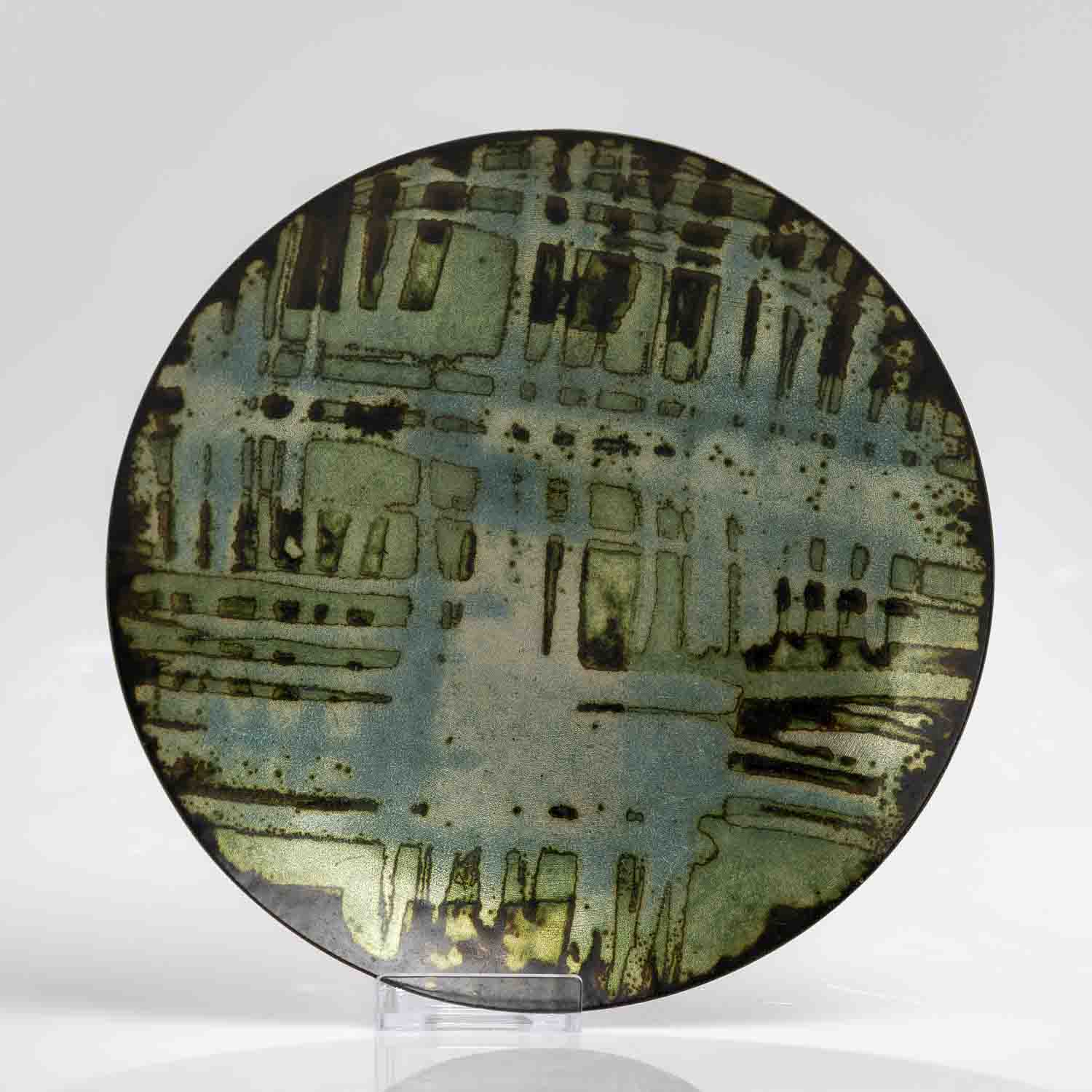
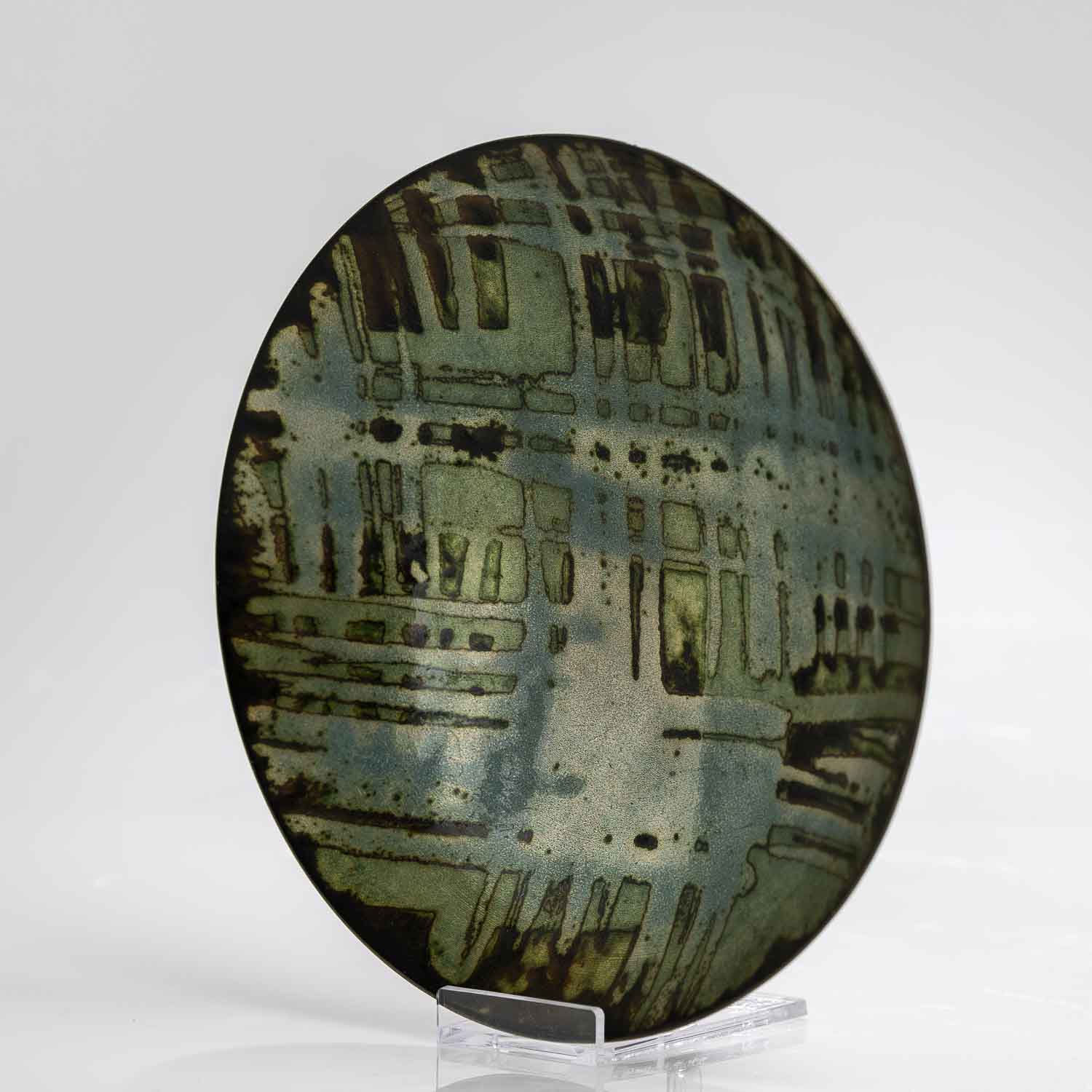
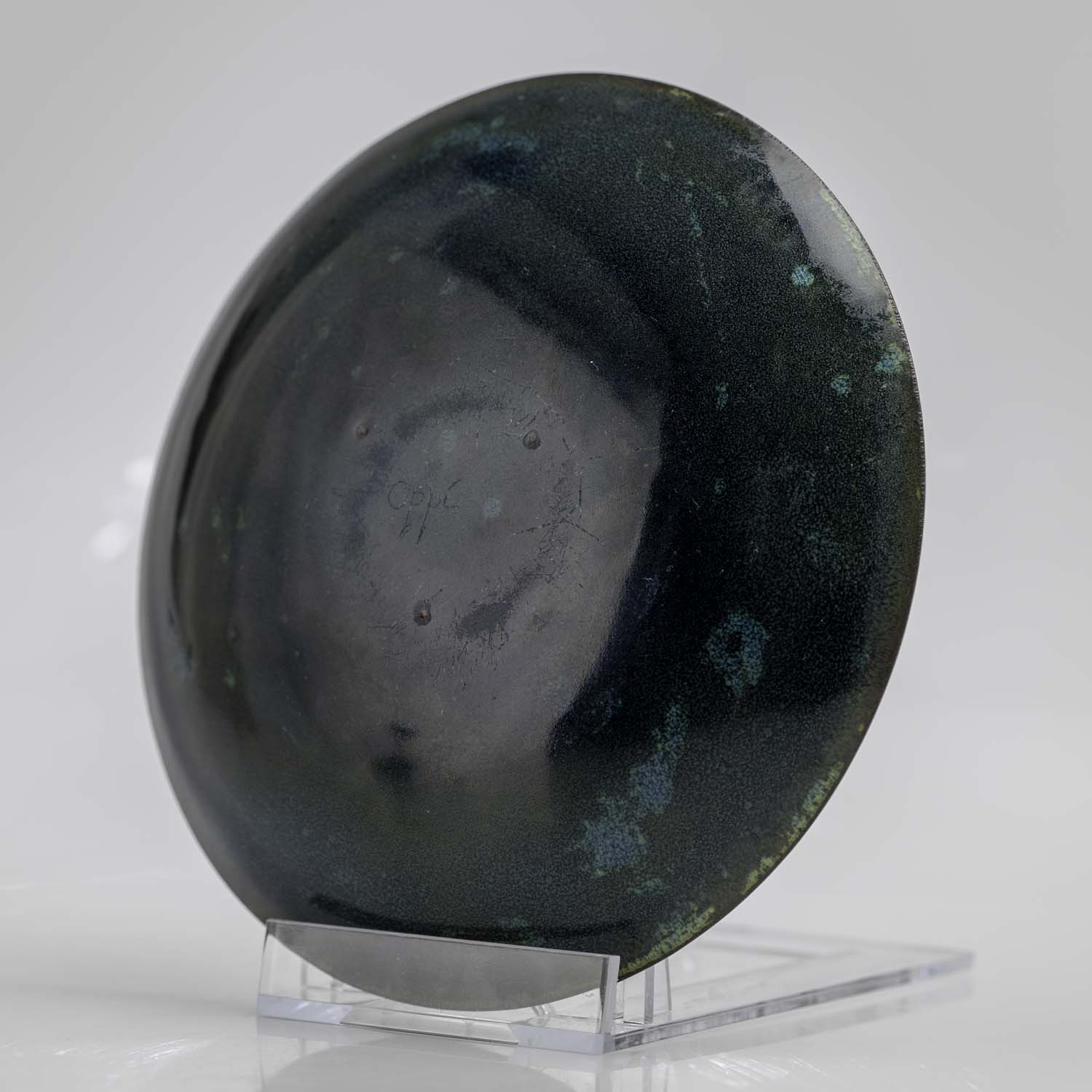
Oppi Untracht - A multicoloured enameled copper plate - 1960's or 1970's
A multicoloured enameled copper plate, with spot textured areas. Handmade by Oppi Untracht in his own workshop in the 1960’s or 1970’s. The plate is signed on the reverse by the artist in diamondpen: Oppi.
Oppi Untracht taught enameling at the Brooklyn Museum Art school. The copper plates Oppi Untracht and his wife Saara Hopea used were hand lathe spun by Abram Bender in New York.
Price including VAT
€650.00Toevoegen aan winkelwagen
About Oppi Untracht
Oppi Untracht (New York City 1922– Porvoo, Finland 2008) was an American master metallurgist, educator, photographer and writer renowned for his significant contributions to the study and documentation of traditional and contemporary crafts, particularly in the fields of jewelry and metalwork. His work stands as a vital bridge connecting Western and Eastern craft traditions, providing in-depth insights into the techniques, cultural contexts, and artistic expressions of various artisans.
Born in New York City in 1922, Untracht developed an early interest in the arts, which led him to pursue formal education in design and craftsmanship at the Columbia University in New York.
Untracht’s career was marked by a profound dedication to exploring and documenting the intricate world of crafts. He traveled extensively, particularly in Scandinavia, where he immersed himself in studying traditional metalwork and jewelry. His passion for understanding different cultural approaches to craft led him to Finland, where he spent several years researching and practicing local techniques.
One of Untracht’s most significant contributions was his ability to synthesize and present complex craft techniques in a way that was accessible and educational for a broad audience. His seminal book, “Metal Techniques for Craftsmen,” published in 1968, became an essential reference for students, artisans, and scholars. The book meticulously detailed various methods of metalworking, providing comprehensive instructions and illustrations that have stood the test of time.
A pivotal period in Untracht’s life was his time in India, where he delved into the rich traditions of Indian jewelry and metalwork. His marriage to Saara Hopea, a renowned Finnish glass and jewelry designer, and his subsequent immersion in Indian culture profoundly influenced his work. Untracht’s deep respect for Indian artisans and their techniques is evident in his acclaimed book, “Traditional Jewelry of India” (1997). This exhaustive study is celebrated for its meticulous research, stunning photography, and insightful analysis of India’s diverse jewelry traditions.
Oppi Untracht’s legacy is characterized by his exceptional ability to document and preserve traditional craft techniques while fostering a greater appreciation for the artistry involved. His work continues to inspire new generations of craftsmen and scholars. Untracht’s books remain authoritative resources, and his photographic archives serve as a valuable visual record of traditional crafts that might otherwise have been forgotten.
Marked in diamondpen underneath the base:


